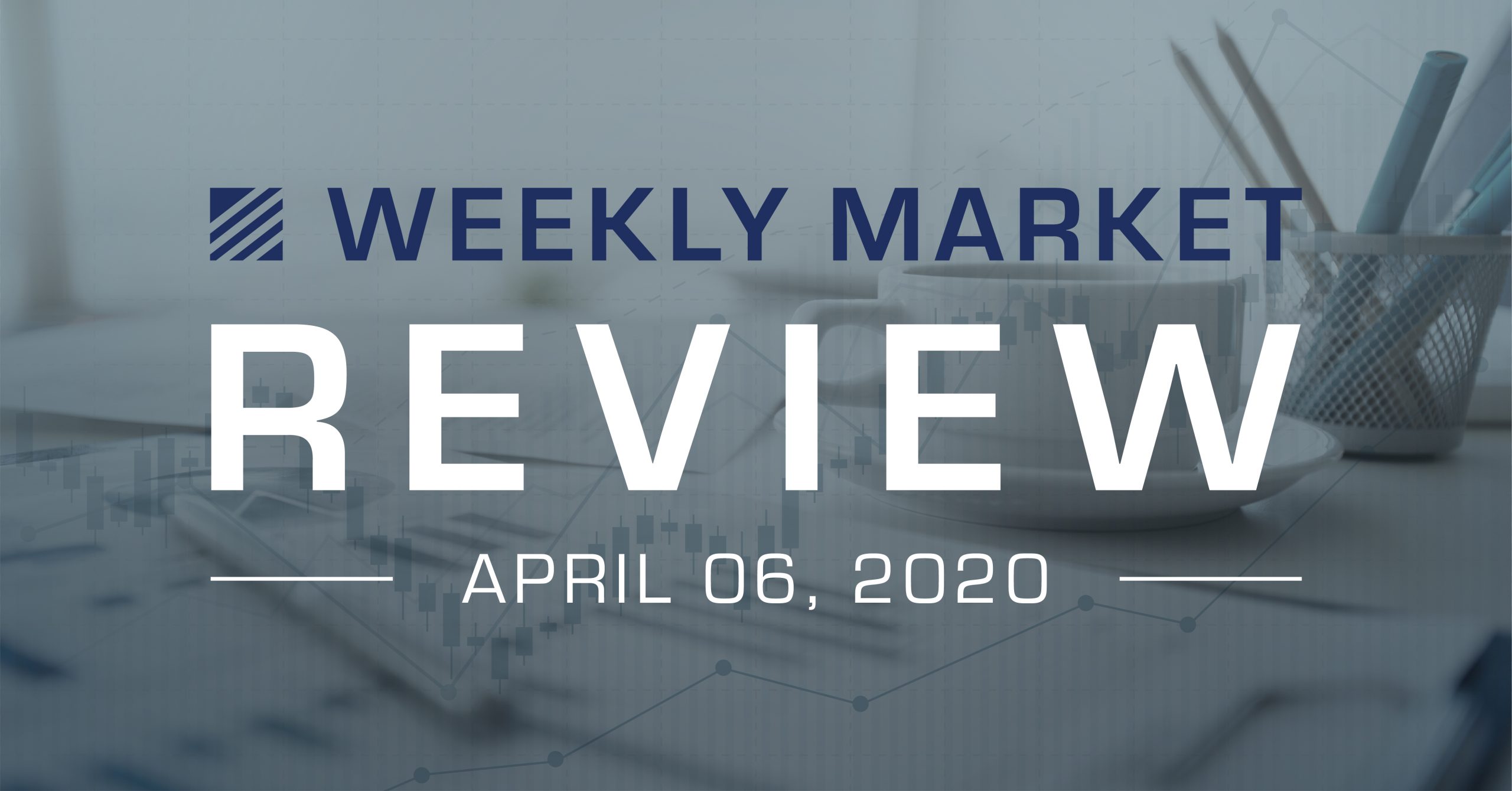
A big gap down during pre-market trading on Wednesday morning sealed a down week for the S&P 500. Defensive sectors (staples, healthcare) rallied sharply alongside energy which benefited from a massive move higher in crude oil prices (+33%). Interest rates didn’t move notably in either direction outside of the 10yr UST, which fell 10bps to 0.62%, back within shouting distance of the all-time low yield of 0.54%. Volatility declined from the low 60’s to high 40’s during the week while the trade weighted USD added 2.25% in the flight to quality rally we’ve seen since late February.
Market Anecdotes
- Some tangible signs of good news on the CoVid-19 front came last week with several U.S. states, Italy, Switzerland, Germany, and Spain beginning to show an impact of containment measures and immunity ‘flattening’ the curves. Iceland’s PCR testing shows over 50% of positive cases are asymptomatic. China/South Korea active cases well below levels over a month ago.
- Fortunately, many of the disease models are proving to be more dire than real-time results given forecasting difficulty, unreliable testing data, containment measures, and a robust healthcare response.
- Economic GDP forecasts are all over the map in an attempt to forecast terminal activity. Ultimately, Q2 GDP dispersion from -9% to -40% may be less important than being right on Q3/Q4 recovery magnitude.
- For all the talk of China reopening, it deserves noting that PMIs remain under 50 level. Output/supply is recovering but it will take time for aggregate demand to follow.
- A sound grasp on sector composition can inform regional equity exposures as investors look to position for recovery. It is probably still too early for cyclicals, but you’re paying up for U.S. defensive and quality. U.S. treasuries offer very little shelter now with yields near record lows.
- Bespoke noted how off market hour anxiety is translating to a stunning trading trend: after hours -28.2% (buy at the close, sell at the open) and +6.4% regular hours (buy at the open, sell at the close). Also noted were exceptional returns following large quarterly drops in the S&P 500.
- The Fed’s weekly balance sheet report illustrated the new QE and USD liquidity swaps have begun in earnest as suggested by a 22% increase in assets over the past two weeks. The new programs (PDCF, MMLF) haven’t been a major factor yet.
- Thursday/Friday made for WTI crude oil’s largest single and two-day gains (+39.5%) in history after dipping into the teens for the first time since 2002.
- While overall private sector debt is in surplus territory, that is due to strong household balance sheets emerging from the GFC. Corporate debt has grown from 40% to 46% of GDP and from 54% to 60% as percentage of book value. A looming distressed cycle awaits.
Economic Release Highlights
It is painfully clear that economic reports in March reflect pre-COVID-19 activity, lacking any predictive value. Our focus has shifted to higher frequency physical statistics such as Google search trends, same store retail sales, consumer sentiment, weekly jobless claims, fuel sales, and electricity consumption. That said, below are several economic release highlights from last week.
- March consumer confidence reading of exceeded expectations (120a vs 110e) but the tally only went through March 18th and it did register a notable decline from February’s 130 level.
- March payrolls declined 701,000, pushing the U-3 unemployment rate up from 3.5% in February to 4.4%. The U-6 unemployment rate rose from 7% to 8.7%. A record 6.648mm Americans filed for unemployment last week, up slightly from 3.307mm the prior week.
- February pending home sales (pre-COVID-19) easily surpassed consensus expectations (+2.4% vs -1.6%). YoY Case-Shiller home prices rose 3.92% for January.
- March PMI Manufacturing of 48.5 and Services of 39.8 both came in right at expectations.
- March ISM Manufacturing (49.1a vs 44.0e) and Services (52.5a vs 43.0e) both registered significantly higher than forecasted, highlighting the challenge of forecasting economic variables in this environment.

